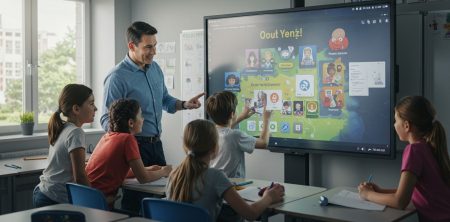In today’s dynamic educational landscape, the modern teacher must continually evolve their teaching methods to capture students’ attention and enhance learning outcomes. One increasingly popular approach involves incorporating kids animated shows into lesson plans, creating a bridge between entertainment and education that resonates with young learners. These colorful, engaging programs offer more than just entertainment—they present complex concepts in accessible formats that children can easily understand and relate to.
The integration of animated content into classroom activities represents a strategic response to changing learning preferences among digital natives. Effective educators recognize that these shows can serve as powerful teaching tools when properly contextualized and discussed. By selecting age-appropriate animated content that aligns with curriculum objectives, teachers create multi-sensory learning experiences that accommodate diverse learning styles while maintaining educational rigor.
Research increasingly supports the educational value of well-designed animated content. Studies show that children often retain information more effectively when it’s presented through storytelling and visual narratives. The characters and scenarios featured in quality educational animations can help illustrate abstract concepts, model positive behaviors, and introduce complex topics in non-threatening ways. This approach proves particularly valuable when teaching subjects that might otherwise seem intimidating or inaccessible to young learners.
Beyond content knowledge, animated shows frequently address social-emotional learning needs. Many programs deliberately incorporate lessons about friendship, conflict resolution, perseverance, and emotional regulation—skills that are increasingly recognized as crucial for academic success and lifelong wellbeing. When teachers facilitate discussions about these themes, they help students transfer these lessons from the screen to real-life situations in the classroom and beyond.
The multimedia nature of animated content also supports language development and literacy skills. Exposure to varied vocabulary, dialogue patterns, and narrative structures enriches students’ linguistic resources. Teachers can leverage this by implementing activities like prediction exercises, character analysis, or creative writing prompts based on familiar animated worlds. These activities transform passive viewing into active learning opportunities that strengthen core academic skills.
Cultural representation in animated programming offers another valuable dimension for classroom exploration. Diverse characters, settings, and storylines can introduce students to different perspectives and experiences, fostering cultural awareness and empathy. Thoughtful educators use these elements as springboards for discussions about diversity, inclusion, and global citizenship—conversations that prepare students to navigate an increasingly interconnected world.
Critics might argue that screen time should be minimized in educational settings, but proponents emphasize that the quality and context of media consumption matter more than quantity. When teachers carefully select content, establish clear learning objectives, and facilitate meaningful discussions and activities, animated shows become powerful pedagogical tools rather than mere entertainment. The key lies in intentionality—using these resources strategically rather than as time fillers or rewards.
Professional development resources increasingly address media literacy and the educational application of animated content. Forward-thinking school districts provide training that helps teachers evaluate programming quality, identify curriculum connections, and design effective lesson plans incorporating animated elements. These initiatives acknowledge that skillful integration of such content requires specific knowledge and pedagogical techniques.
Parent communication represents another important aspect of this approach. When teachers explain the educational rationale behind using animated shows in the classroom and suggest quality programming for home viewing, they extend learning beyond school hours and empower families to make informed media choices. This collaboration strengthens the home-school connection and creates consistency in children’s learning environments.
As technology continues advancing, the potential educational applications of animated content will likely expand. Interactive elements, augmented reality features, and customizable learning paths may offer increasingly personalized educational experiences. Teachers who develop the skills to evaluate and implement these resources will be well-positioned to meet the evolving needs of future students in increasingly digital classrooms.

